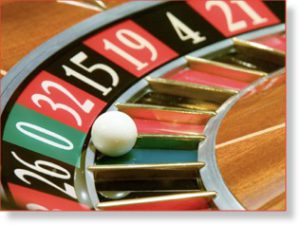 From the Editor…
From the Editor…
Why is it important to know the odds of getting PRP, adult onset versus juvenile or by one of the six “types”? Quite simply — it’s a matter of storytelling. Each PRP patient and/or caregiver is a subject-matter expert. When I am asked a question about PRP or had the opportunity to share my journey (circa 2013), I started with a basic statement — spoken with authority and without apology.
Pityriasis rubra pilaris is a very rare skin disorder. It affects one in 400,000. There are an estimated 803 “active” PRP patients in the U.S. and 69 here in Texas. I have Adult Onset PRP where the odds are closer to one in 800,000.
In less than 50 words I made my point. PRP IS RARE.
You know your version of PRP better than ANY living soul on this planet. You know the challenges you face, day in and day out — week after miserable week.
The more you know about PRP, the more credibility you will have with your dermatologist.
Let me end this introduction with a disclaimer. I hate math. Sometime between Miss Bachman’s Algebra I class in high school and Economics 101 in college, I decided I would rather write than calculate. So here I am writing about the odds of getting PRP. Feel free to challenge my mathematical prowess — if such exists — and offer alternative calculations. I will not be offended. Use “Leave a Reply” below for such offerings.  In March 2003, Dr. Andrew Griffiths delivered a “Dowling Oration” to members of the British Association of Dermatology assembled in Liverpool, England. Dr. Griffiths reflected on 35 years of diagnosing, treating and researching pityriasis rubra pilaris.
In March 2003, Dr. Andrew Griffiths delivered a “Dowling Oration” to members of the British Association of Dermatology assembled in Liverpool, England. Dr. Griffiths reflected on 35 years of diagnosing, treating and researching pityriasis rubra pilaris. He unilaterally fixed the PRP prevalence rate at one in 400,000. While the methodology used by Dr. Griffiths is subject to debate, dermatologists worldwide have accepted his estimates.
He unilaterally fixed the PRP prevalence rate at one in 400,000. While the methodology used by Dr. Griffiths is subject to debate, dermatologists worldwide have accepted his estimates.
As of February 26, 2019, the PRP Global Database tracks 1,822 PRP patients of whom 94 percent have indicated a diagnosis of Adult Onset or while four percent report an onset date consistent with Juvenile Onset.
While the estimated population of the U.S. is over 321 million, the following estimates are based on a U.S. population of 320 million because 320 million divided by 400,000 equals 800. For those of us who are mathematically challenges — I feel your pain.

Type 1: Classical Adult — One in 800,000
✽ Patient population percentage: 55%
✽ Number of “active” Type 1 cases of PRP in US: 440
✽ Prognosis: 80% of the ‘active” patients (352) will have “spontaneous” remission within two to four years.
Type 2: Atypical Adult — One in 8 million
✽ Patient population percentage: 5%
✽ Number of “active” Type 2 cases of PRP in US: 40
✽ Prognosis: estimated duration: 20 years or more
Type 3: Classical Juvenile — One in 4 million
✽ Patient population percentage: 10%
✽ Number of “active” Type 3 cases of PRP in US: 80
✽ Usually occurs between the ages of 5 and 10
✽ Prognosis: the average Type III remission is within one year.
Type 4: Circumscribed Juvenile — One in 1.6 million
✽ Patient population percentage: 25%
✽ Occurs in children before puberty
✽ Number of “active” Type 4 cases of PRP in US: 200
✽ Prognosis: not a long-term affliction.
Type 5: Atypical Juvenile — One in 8 million
✽ Patient population percentage: 5%
✽ Number of “active” Type 5 cases of PRP in US: 40
✽ Prognosis: runs a chronic course
Type 6: HIV-associated
Editor’s Note: Let’s just say that Type VI: HIV-associated is too rare to calculate any odds.

-First paragragh…journey n(circa 2013)…remove the n Editor: Fixed it.
-2nd paragraph… There are an estimated…instead of are you should put is (There is an estimated) Editor: Fixed it.
-“Dowling Oration” to to members…remove one of the to Editor: Fixed it.
-four percent report amn onset…take outthe m in amn Editor: Fixed it.
Fran — Thanks for taking the time!!! 🙂